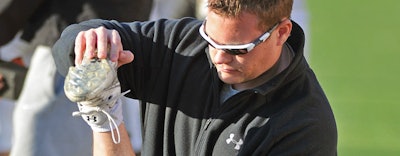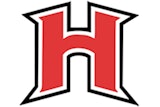
Athletes participating in every sport at the collegiate and professional levels have come to rely on an athletic trainer for all of their injuries and ailments. Athletic trainers' specialized scope of practice includes injury prevention, emergency care, clinical diagnosis, therapeutic intervention and rehabilitation of injuries and medical conditions.
Student health and sports safety initiatives have escalated and remain in the media spotlight. As a result, high school athletic programs have undergone some major changes in an attempt to make participation safer and to ensure best practices are in place. A recent high school benchmark study published in the March Journal of Athletic Training reported that 37 percent of high schools in the United States have at least one full-time athletic trainer, thus meeting the standard of care recommended by the National Athletic Trainers' Association. Additionally, 70 percent of public high schools have athletic training (AT) services. These statistics are an update to a 1994 study that which indicated only 35 percent of public high schools used AT services. Overall access to athletic trainers has doubled over the past 20 years.

While this is good news on the athletic training front, there is more work to be done. It's critical that school boards, administrators, coaches, parents and others understand the valuable role of the athletic trainer and the appropriate medical care services they provide. The following points offer a clearer picture of the role athletic trainers play in an athletic program.
1. Overseeing general care of student-athletes. The athletic trainer is the healthcare professional who takes care of student-athletes even after the school nurse and other staff have left for the day. This is when the athletic trainer begins the daily routine of injury rehabilitation, injury evaluations, protective taping, practice preparation, monitoring environmental conditions such as heat and humidity, consulting with physicians, checking the status of weather conditions, conducting concussion follow-up and honoring return-to-play protocols. This is what many call rush hour. This occurs every day from the sound of the last bell until the first half-hour of practice has been completed.
2. Coordinating care with teachers and other administrative staff. Research shows that schools with an athletic trainer have more diagnosed concussions. The athletic trainer's background prepares him or her to work day-to-day with the administration, school nurse, staff and parents to help students manage concussions. This includes prevention, on-the-field evaluation should injury occur, and the care, management and recovery protocols required to ensure the athlete recovers and then returns to play in the most effective and efficient manner.
Athletic trainers are also more likely to follow best practices when completing return-to-play protocols following concussions. This is vitally important because second-impact syndrome is an extremely dangerous condition that occurs in younger athletes when they have a concussion that doesn't properly heal and then have another concussive episode. This condition can lead to permanent disability and even death. The goal is "return to learn" first, meaning re-assimilation into the classroom environment. Once that is accomplished, the next step is to get the athlete to complete a return-to-play protocol and release him or her back into the sport of choice.
3. Directing preventative care for a wide range of injuries. Injuries vary from sprains and strains to more severe, unusual injuries or conditions that require specialized training, recognition, management and treatment. If the school doesn't have an athletic trainer, the coach or athletic director may try to provide this medical care and decision-making. Coaches are hired to coach, prepare and condition their teams; and athletic directors are meant to oversee the department. They should not be expected to also handle medical aspects, and any type of substandard care could put the athlete's health and welfare at risk.

4. Providing referrals and expediting medical care for injured athletes. Athletic trainers often have developed relationships with local physicians and specialists and, in many cases, have worked out agreements for student-athletes to be seen as extra or add-on patients, usually within 24 hours of an injury occurring. An athletic trainer-made referral also allows for quicker treatment, rehabilitation and care, which in turn speeds the recovery process. In addition to putting coaches, parents and athletes at ease, this allows coaches to have more time to make personnel changes or adjust their strategy.
5. Managing administrative responsibilities and paperwork. The athletic trainer often becomes the gatekeeper of all medical forms used in an athletic program and works with the school nurse to ensure that academic or physical education accommodations are being followed correctly. This includes collecting medical forms, completing injury reports, completing daily injury and rehabilitation notes, submitting school insurance information, collecting pre-participation physical exam paperwork, conducting baseline concussion testing, securing medical releases, ensuring coach compliance with required documentation and monitoring for HIPAA and FERPA compliance. These are all critical tasks, with the goal of eliminating or decreasing potential liability of the school district should injury occur.
6. Assisting in the development of an Emergency Action Plan (EAP). Athletics administrators should have an EAP for every venue that their athletic teams use for practice and games. The athletic trainer is a valuable resource for a school district and athletic director in helping coordinate this plan, by offering not only knowledge of emergency response and planning, but an established rapport with local emergency responders, as well. The athletic trainer can also help develop response protocol in the event that a spectator, coach or student-athlete is injured as a result of an emergency situation.
7. Assisting with offseason strength and conditioning programs. Though such programs are becoming commonplace at secondary schools, many schools do not have a dedicated strength and conditioning coach. If this is the case, the athletic trainer can assist all coaches in developing a sound offseason strength and conditioning program — one that will incorporate safe and appropriate exercises for various sports and specific positions.
Many school-based pre-participation physical exams include a musculoskeletal screening to recognize any type of deficits that an athlete may have and incorporate appropriate stretching or strengthening during the off-season. During this time, athletic trainers can work with coaches and athletes to collect data and determine sweat rates for athletes, a major step in reducing heat-related injuries such as heat stroke or rhabdomyolysis.
Find NATA’s Secondary School Position Proposal Guide and other information by visiting www.nata.org
8. Addressing non-sport-related health issues. While sports safety protocols remain critical, the issue of childhood obesity and its associated health complications is also a serious concern. The secondary school age group is not immune to these problems. Youths are healthier, perform better and at a higher level if they are not overweight. Athletic trainers are already involved with safe weight loss and weight-gain programs associated with the sport of wrestling, but this knowledge and expertise can be useful with every sport. The continued rise in childhood obesity is one of the reasons that many organizations are touting the benefits of exercise and organized activities for youth.
9. Overseeing the athletic department and coaches to ensure compliance with state regulations. A number of states have set forth legislation and coaching education programs related to health conditions such as sudden cardiac death or heat exposure. Today, all states have concussion legislation in place. It is part of the athletic trainer's job to develop programs to educate staff, parents, coaches and athletes on signs and symptoms, as well as their responsibility to evaluate student-athletes who show signs and symptoms of an injury or illness.
10. Directing educational and in-service programs for administrators, teachers and support staff. School districts are increasingly concerned about a plethora of student health issues, including MRSA, sudden cardiac arrest, exertional heat illnesses and concussions. An athletic trainer can help to educate staff and impress upon them the importance of appropriate care when dealing with these issues or others, which can be extremely helpful in both prevention and recovery.
11. Assisting other school staff members. For teachers who have suffered injuries, an athletic trainer may be able to facilitate appointments and referrals, helping to reduce time loss or days missed. This in turn saves the school district money, keeps students on task and can help improve scores on standardized state testing.
12. Developing a program-wide policy and procedure manual to address injuries and health issues. Such a manual is extremely important when dealing with the variety of situations that can arise in an athletic department. This document can also be posted online to help eliminate questions from parents or coaches when faced with an issue or problem and will help all coaches to respond to situations in a uniform manner.
Hiring an athletic trainer is a major step toward improving youth sports safety in secondary schools. The athletic trainer fills a very important position within any athletic department, working with coaches to reach the same goal: a successful, healthy program.
Larry Cooper, MS, LAT, ATC, is a teacher and athletic trainer with Penn-Trafford High School in Harrison City, Pa., and chair of the National Athletic Trainers' Association Secondary School Athletic Trainers Committee.
This article originally appeared in the May 2015 issue of Athletic Business with the title "All In A Day's Work"




































